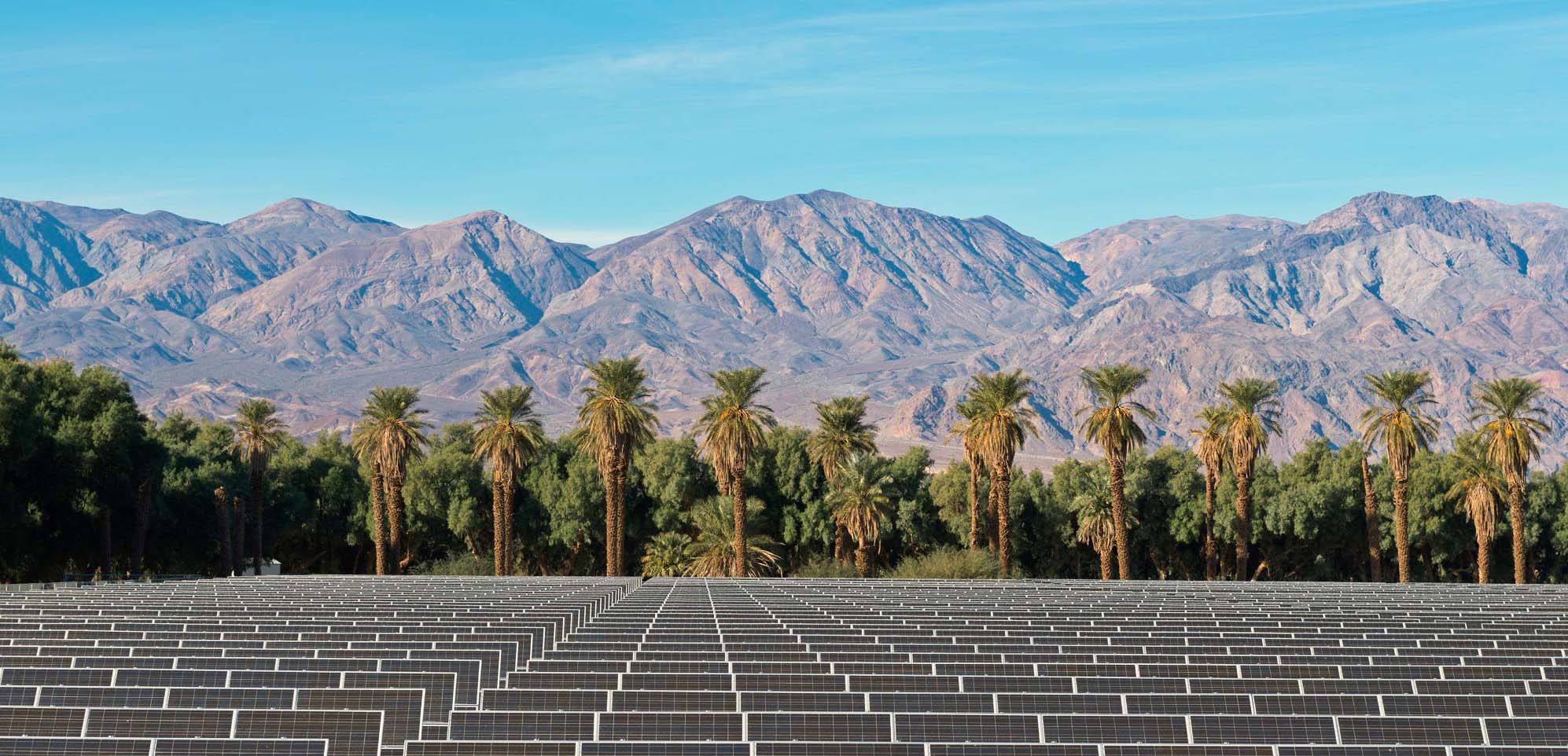The US’s largest state economy has forged ahead with ambitious goals to reduce greenhouse gas emissions across its heavily polluting sectors by 2045 through legislation and executive orders, targets that have already spawned programs favouring renewable power producers and waste to energy facilities in the state.
California’s ambitious climate change initiatives creates near-term infrastructure investment opportunities and lays out a framework for other regions to follow suit.
If a standalone country, California would be the world’s fifth largest economy. It is already a global leader in climate policy and decarbonisation and has, through legislation and executive orders, committed to the goal of becoming carbon neutral by 2045.
Decarbonisation of the state requires transformation of multiple sectors; currently two thirds of California’s carbon emissions come from electricity (15%), transportation (41%) and buildings (14%), the state’s SB (Senate Bill) 100 outlines. In each of these sectors, public and private sectors are designing programs to meet the state’s ambitious decarbonisation goals.
Electricity
California is undergoing a transformation of its electric generation shifting from a majority of natural gas plants providing its electricity towards renewables thanks mainly to a landmark policy requiring renewable energy and zero-carbon resources to supply 100% of retail sales and electricity procured to serve all state agencies by 2045, SB 100 states.
A series of California Senate Bills and other legislation have spawned programs over the years and put progressively tighter limits on greenhouse gas emissions allowable for the state’s electricity use.
To meet these electricity sector goals, California will need to continue to build substantial renewable generation capacity, expected to come largely from solar generation. Generation will need to be coupled with a significant expansion in electric storage assets. Storage will be needed to strengthen the grid and can provide a number of revenue streams for an investment, including resource adequacy (capacity) fees, energy arbitrage, and frequency regulation. Storage can also prevent or defer expensive transmission upgrades.
Southern California Edison estimates that 80+ gigawatts of new utility-scale clean generation and 30+ gigawatts of utility-scale storage will be needed by 2045. This requires a development rate 2-3 times higher than historical levels, representing $170bn of renewable energy investment, Southern California Edison’s November 2019 ‘Pathway 2045’ report notes.
Greening the grid will come at a cost. However, a Joint Report from the California Energy Commission (CEC), California Public Utility Commission (CPUC) and California Air Resources Board (CARB) issued in December 2021 found that achieving a 100% renewable grid by 2045 is achievable at a cost estimated to be only 6% higher than a 60% RPS.
In June 2021 the CPUC approved the procurement 11.5 GW of resource adequacy (a capacity product), exclusively from clean energy sources, by 2026, evidencing the expected significant transformation of the power grid.

Igneo Infrastructure Partner’s investments in California-focused renewable independent power producer with significant in-state wind, solar, and battery projects in operation and under development, positions the company for continued investment in transforming the state’s electricity grid.
While California is a leader in renewable energy adoption, other states have made similarly impressive commitments over the last 5 years, and we expect the transformation of the electricity sector in California to continue elsewhere in the country as well.
Transportation
The transportation sector is the state’s largest contributor to greenhouse gas emissions (GHGs), responsible for 50% of GHGs, but decarbonisation efforts have significantly lagged the electricity sector.
Decarbonising the transportation sector requires widespread vehicle electrification by 2045. Vehicle cost declines and existing state mandates are expected to drive the rate of electric vehicle adoption. Executive orders issued by California Governor Gavin Newsom recently require commercial trucks and vans sold in California to be zero-emission starting in 2045 and for the sales of all passenger vehicles to be zero-emission by 2035.
Electrification of transportation is expected to increase electricity demand by one third, adding further to the expected renewable power and electricity storage buildout.
In addition to electrification, California has led the way in renewable transportation fuels. A recent Bill gave the state’s energy authority the mandate to establish a Low Carbon Fuel Standard (LCFS) in 2009 to reduce emissions in the transportation sector. This LCFS works to decrease the carbon intensity of California's transportation fuel pool and provide an increasing range of low-carbon and renewable alternatives, which reduce petroleum dependency and achieve air quality benefits.

Igneo Infrastructure Partners portfolio company, Rialto Bioenergy Facility, which produces renewable natural gas from the anaerobic digestion of food waste diverted away from landfills, benefits from renewable natural gas sales that access the LCFS market.
Buildings
California Senate Bills which passed in September 2018 targeted reduction of GHGs from buildings. These pieces of legislation spawned two new programs including the BUILD program (Building Initiative for Low-Emissions Development) which provides incentives for new all-electric low-income housing; and the TECH Clean California program which addresses existing residences seeking to reduce carbon footprint through the adoption of low-emissions space and water heating systems.
These state laws call on the California Energy Commission to undertake an assessment of the feasibility of reducing the GHGs for the state’s buildings 40% below 1990 levels by 2030. The new laws are expected to increase electricity demand by 15%, adding further to the projected renewable power and electricity storage buildout.
Our North American assets
Important information
All data sources are independently verified and can be evidenced by Igneo Infrastructure Partners.
This material is for general information purposes only. It does not constitute investment or financial advice and does not take into account any specific investment objectives, financial situation or needs. This is not an offer to provide asset management services, is not a recommendation or an offer or solicitation to buy, hold or sell any security or to execute any agreement for portfolio management or investment advisory services and this material has not been prepared in connection with any such offer. Before making any investment decision you should consider, with the assistance of a financial advisor, your individual investment needs, objectives and financial situation.
We have taken reasonable care to ensure that this material is accurate, current, and complete and fit for its intended purpose and audience as at the date of publication. No assurance is given or liability accepted regarding the accuracy, validity or completeness of this material and we do not undertake to update it in future if circumstances change.
To the extent this material contains any expression of opinion or forward looking statements, such opinions and statements are based on assumptions, matters and sources believed to be true and reliable at the time of publication only. This material reflects the views of the individual writers only. Those views may change, may not prove to be valid and may not reflect the views of everyone at Igneo Infrastructure Partners or First Sentier Group.
About First Sentier Group
References to 'we', 'us' or 'our' are references to Igneo Infrastructure Partners or First Sentier Group (as applicable). First Sentier Group is a global asset management business which is ultimately owned by Mitsubishi UFJ Financial Group. Igneo Infrastructure Partners is an unlisted infrastructure asset management business and is part of the First Sentier Group.
We communicate and conduct business through different legal entities in different locations. This material is communicated in:
- Australia and New Zealand by First Sentier Investors (Australia) RE Ltd, authorised and regulated in Australia by the Australian Securities and Investments Commission (AFSL 240550; ABN 13 006 464 428)
- European Economic Area by First Sentier Investors (Ireland) Limited, authorised and regulated in Ireland by the Central Bank of Ireland (CBI reg no. C182306; reg office 70 Sir John Rogerson's Quay, Dublin 2, Ireland; reg company no. 629188)
- Hong Kong by First Sentier Investors (Hong Kong) Limited and has not been reviewed by the Securities & Futures Commission in Hong Kong. First Sentier Investors and Igneo Infrastructure Partners are business names of First Sentier Investors (Hong Kong) Limited.
- Singapore by First Sentier Investors (Singapore) (reg company no. 196900420D) and this advertisement or material has not been reviewed by the Monetary Authority of Singapore. First Sentier Investors (registration number 53236800B) and Igneo Infrastructure Partners (registration number 53447928J) are business divisions of First Sentier Investors (Singapore).
- United Kingdom by First Sentier Investors International IM Limited, authorised and regulated by the Financial Conduct Authority (reg. no. SC079063, reg office 23 St Andrew Square, Edinburgh, Scotland, EH2 1BB)
- United States by First Sentier Investors (US) LLC, registered with the Securities Exchange Commission (RIA 801#93167)
- Other jurisdictions, where this document may lawfully be issued, by First Sentier Investors International IM Limited, authorised and regulated in the UK by the Financial Conduct Authority (FCA ref no. 122512; Registered office: 23 St. Andrew Square, Edinburgh, EH2 1BB; Company no. SC079063).
To the extent permitted by law, MUFG and its subsidiaries are not liable for any loss or damage as a result of reliance on any statement or information contained in this document. Neither MUFG nor any of its subsidiaries guarantee the performance of any investment products referred to in this document or the repayment of capital. Any investments referred to are not deposits or other liabilities of MUFG or its subsidiaries, and are subject to investment risk, including loss of income and capital invested.
© Igneo Infrastructure Partners


